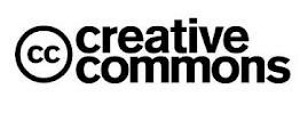There is free, as in speech, and free, as in beer. Then there’s free, as in kittens. As someone with four such adorable animals, which have racked up thousands of dollars in food, litter, and vet bills, I understand the time and money that’s required by a pet that came at no cost. For libraries, open educational resources (OER) represent free kittens.
There’s a growing awareness of OER—lesson plans and other instructional resources which have been shared under a license that allows free use and modification—but libraries should proceed with eyes wide open. In a promotional video, education secretary Arne Duncan encourages teachers to share and remix these resources. But there’s a hidden cost in the time it takes to find, modify, and distribute this content.
 The core principle of OER is reflected in participating partner Creative Commons’ (CC) licensing models. One of the standard licenses that content creators can apply to their work is BY/NC/SA (attribution, noncommercial, and share-alike). Anything released under this license can be reused for non-commercial purposes as long as attribution is provided. If modifications are made, then the resulting product must be shared under a similar license. Other CC licenses stipulate different rights, so be sure to browse the options on the Creative Commons website.
The core principle of OER is reflected in participating partner Creative Commons’ (CC) licensing models. One of the standard licenses that content creators can apply to their work is BY/NC/SA (attribution, noncommercial, and share-alike). Anything released under this license can be reused for non-commercial purposes as long as attribution is provided. If modifications are made, then the resulting product must be shared under a similar license. Other CC licenses stipulate different rights, so be sure to browse the options on the Creative Commons website.
One open resource is CK-12, which provides free textbooks for a variety of subjects. These digital works are collaboratively written and edited by international experts and offer additional materials, including teaching guides, extension activities, and videos. Then there’s Curriki, a clearinghouse site for K–12 OER.
There’s plenty of open content to explore, but you can also create your own using simple tools. The recently released iBooks Author provides a free, Mac-only platform for creating textbook-like resources. The easy-to-use interface enables authors to embed presentations, videos, and links. The terms of use are actually pretty supportive of OER. You can freely create and distribute iBooks Author products on any platform. But if you want to charge for your book, then you must release it through Apple’s iBookstore.

iBooks Author
Ideas for using the platform: find short texts to support the Common Core or gather primary sources that cover a topic and then publish them on the fly. Make no mistake, this isn’t “Publishing” with a capital P. Even though traditional textbooks may be fading away, we still need the expertise and editing that comes with professional publishing. Student (or teacher) curation is a laudable goal, but right now, the practice tends to resemble hoarding rather than reflective curation.
One of the challenges is that we tend to be alone in our libraries and are trying to fill multiple roles. Unlike academic settings, most school libraries don’t have a dedicated science or history librarian with dual expertise in collection development, plus their subject. But librarians do have diverse backgrounds; I was an American studies major in college and my media specialist wife studied math and classics. What’s your area of expertise? And are you willing to share your knowledge? That’s the power of OER—together we can be experts in many areas.
Like a free kitten, OER requires time—and funding—to scale. But with the backing of the U.S. Department of Education, this movement is gaining speed, and we’re a natural fit for introducing these resources. So go forth and create and share.



Fine way of describing, and pleasant post to obtain data
about my presentation focus, which i am going to convey in university.
Birgit